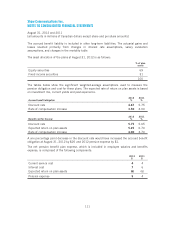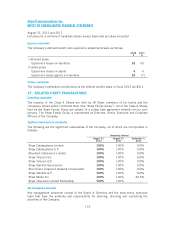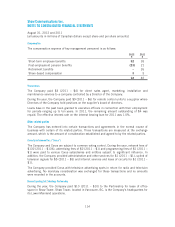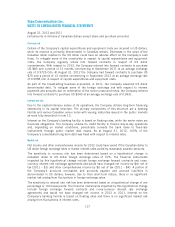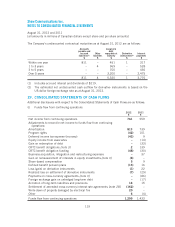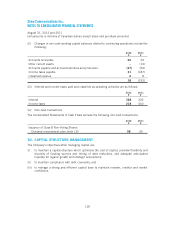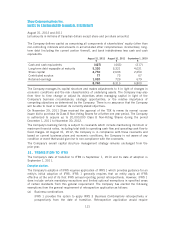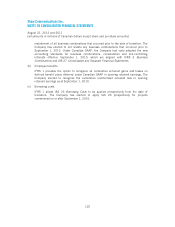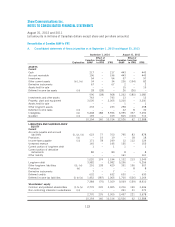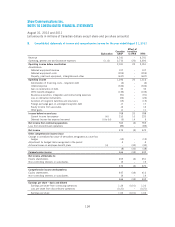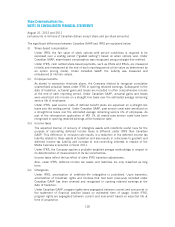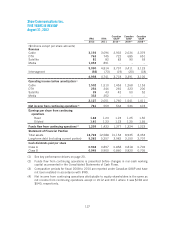Shaw 2012 Annual Report Download - page 122
Download and view the complete annual report
Please find page 122 of the 2012 Shaw annual report below. You can navigate through the pages in the report by either clicking on the pages listed below, or by using the keyword search tool below to find specific information within the annual report.Shaw Communications Inc.
NOTES TO CONSOLIDATED FINANCIAL STATEMENTS
August 31, 2012 and 2011
[all amounts in millions of Canadian dollars except share and per share amounts]
Credit risk
Accounts receivable in respect of Cable and Satellite divisions are not subject to any significant
concentrations of credit risk due to the Company’s large and diverse customer base. For the
Media division, a significant portion of sales are made to advertising agencies which results in
some concentration of credit risk. At August 31, 2012, approximately 58% (2011 – 58%) of
the $182 (2011 – $176) of advertising receivables is due from the ten largest accounts. The
largest amount due from an advertising agency is $20 (2011 – $20) which is approximately
11% (2011 – 12%) of advertising receivables. As at August 31, 2012, the Company had
accounts receivable of $433 (August 31, 2011 – $443; September 1, 2010 – $196), net of
the allowance for doubtful accounts of $28 (August 31, 2011 – $29; September 1, 2010 –
$19). The Company maintains an allowance for doubtful accounts for the estimated losses
resulting from the inability of its customers to make required payments. In determining the
allowance, the Company considers factors such as the number of days the subscriber account is
past due, whether or not the customer continues to receive service, the Company’s past
collection history and changes in business circumstances. As at August 31, 2012, $111
(August 31, 2011 – $121; September 1, 2010 – $79) of accounts receivable is considered to
be past due, defined as amounts outstanding past normal credit terms and conditions.
Uncollectible accounts receivable are charged against the allowance account based on the age
of the account and payment history. The Company believes that its allowance for doubtful
accounts is sufficient to reflect the related credit risk.
The Company mitigates the credit risk of advertising receivables by performing initial and
ongoing credit evaluations of advertising customers. Credit is extended and credit limits are
determined based on credit assessment criteria and credit quality. In addition, the Company
mitigates credit risk of subscriber receivables through advance billing and procedures to
downgrade or suspend services on accounts that have exceeded agreed credit terms.
Credit risks associated with cross-currency interest rate exchange agreements and US currency
contracts arise from the inability of counterparties to meet the terms of the contracts. In the
event of non-performance by the counterparties, the Company’s accounting loss would be
limited to the net amount that it would be entitled to receive under the contracts and
agreements. In order to minimize the risk of counterparty default under its swap agreements,
the Company assesses the creditworthiness of its swap counterparties. Currently 100% of the
total swap portfolio is held by a financial institution with Standard & Poor’s ratings ranging from
A+ to A-1.
Liquidity risk
Liquidity risk is the risk that the Company will experience difficulty in meeting obligations
associated with financial liabilities. The Company manages its liquidity risk by monitoring cash
flow generated from operations, available borrowing capacity, and by managing the maturity
profiles of its long-term debt.
118





